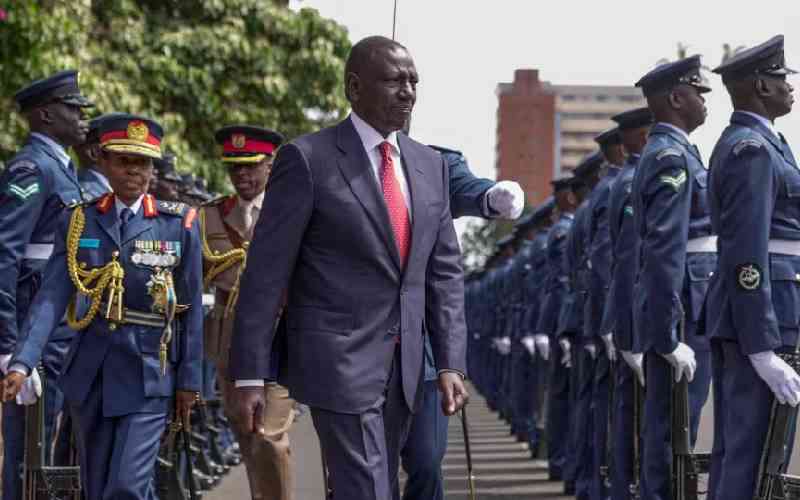Last week, the Supreme Court gave a ruling that permitted schools to choose whether to enforce a dress code or not. The Methodist Church of Kenya had gone to seek redress from the court in 2016.
This ruling affects, particularly, Muslim girls who are required to wear hijab.
Potentially, the ruling affects other faiths as well, such as the Akorino and Sikh men and boys who wear turbans. The ruling by majority judges was mainly focused on technicalities on why Mohamed Fugicha (a parent to three girls at St Paul Secondary School in Isiolo) initially listed as an interested party, transformed into a respondent and the Supreme Court also faulted Mr Fugicha’s affidavit at the trial court in Meru for introducing a subject that was initially not before the court.
They also observed that according to Fugicha, denying his daughters the right to adorn the Muslim dress implied denying them a right to education since it might mean they leave the school. In retrospect, Muslims should not really be worried by this ruling because an avenue of redress has been suggested by the judges. What should worry Muslims is whether schools are going to force their daughters to remove their hijab.
School uniform
The Supreme Court did not order schools to start demanding that Muslim girls remove their hijabs. The school boards of management can make own decisions, which should be driven by compassion and not by religious edicts. Girls can go to school donning a hijab that has the colour of the school uniform. After all, there is no correlation between dress codes and the cognitive abilities in the learning process by these young scholars.
The girl-child has been at the centre of a clash of cultures since time immemorial. When the colonial administration started putting up schools in the early parts of the 20th century, a similar issue ensued between native Africans and colonial school administrators.
Most of the independent churches formed own schools because of disagreements with white colonialists for infringing on what was perceived then to be their cultural rights.
One of Kenya’s freedom fighters, Pio Gama Pinto, in his article; A glimpse of Kenya’s Nationalist Struggle published in 1963, wrote that resolutions were passed in the Church Council of the Protestants in 1929 that parents of African children requiring admission to school should give a written undertaking that they are against the custom of female genital mutilation.
Those who did not give this undertaking were required to remove their children from school. Some even got excommunicated from the church.
The time and manner in which missionaries decided to enforce their views on female circumcision led to the formation of Kikuyu Independent Schools Associations and several other native churches in other parts of the country followed suit.
Catholic Church
According to Pinto, by the start of the Mau Mau struggle, more than 175,000 children had received their education from independent schools run by native churches. Pinto adds: “The best fighters” for the Mau Mau struggle graduated from these schools.
Strangely, in the contemporary Kenyan context, the same Protestant Church and to a large degree the Catholic Church, that formed their own schools as a result of the infringement of the rights by the white missionaries, are today repeating the same hegemonic attitudes towards Muslims.
More interesting are the Catholic-run schools, where the nuns teaching comfortably wear a headscarf but are reluctant to extend the same privilege to young girls that have chosen to cover their heads with head scarfs. In the Bible, the apostle Paul says in 1st Corinthian 11:6: “For if the woman be not covered, let her also be shorn: but if it be a shame for a woman to be shorn or shaven, let her be covered.”
Stay informed. Subscribe to our newsletter
It seems to me that wearing a headscarf for women and girls therefore is a Biblical command that the Muslims are fulfilling. So what is wrong if these innocent souls wore their hijab, and what wrong have they done to be punished by denying them the right to education at their schools of choice?
In places like Isiolo and other parts of Northern Kenya, where many schools are church-run or owned, compelling the girls to remove the hijab in this Muslim-dominated region might reverse the gains in the enrollment of girls in schools - an obstruction to the Government’s efforts to achieve universal access to education.
Mr Guleid is the Executive Director of the Frontier Counties Development Council
 The Standard Group Plc is a
multi-media organization with investments in media platforms spanning newspaper
print operations, television, radio broadcasting, digital and online services. The
Standard Group is recognized as a leading multi-media house in Kenya with a key
influence in matters of national and international interest.
The Standard Group Plc is a
multi-media organization with investments in media platforms spanning newspaper
print operations, television, radio broadcasting, digital and online services. The
Standard Group is recognized as a leading multi-media house in Kenya with a key
influence in matters of national and international interest.
 The Standard Group Plc is a
multi-media organization with investments in media platforms spanning newspaper
print operations, television, radio broadcasting, digital and online services. The
Standard Group is recognized as a leading multi-media house in Kenya with a key
influence in matters of national and international interest.
The Standard Group Plc is a
multi-media organization with investments in media platforms spanning newspaper
print operations, television, radio broadcasting, digital and online services. The
Standard Group is recognized as a leading multi-media house in Kenya with a key
influence in matters of national and international interest.





